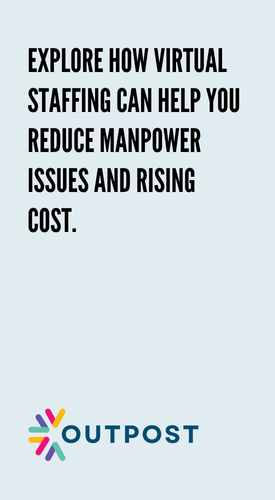The front desk is where your patient relationships begin—or break down.
A missed call. A slow reply. A rushed interaction. These small moments shape how patients see your clinic—and how soon they look elsewhere.
That’s why more clinics are rethinking how they manage reception. For some, an in-house team works best. But others are now turning to a virtual medical receptionist in Singapore to cut costs, improve responsiveness, and handle admin more efficiently.
Still unsure which direction to take? This guide breaks down what a traditional setup provides and how a virtual medical receptionist in Singapore compares—so you can choose the approach that fits your clinic best.
What Does a Virtual Medical Receptionist Actually Handle?

A virtual medical receptionist is a remote professional who performs many of the same duties as an in-person receptionist—just without being physically at your clinic.
They typically handle:
- Phone and WhatsApp inquiries
- Appointment scheduling and confirmations
- No-show follow-ups
- Reminders and reschedules
- Telehealth support
- Data entry into your EHR
Working through VoIP systems and cloud-based software, they operate in real time and can either support or replace traditional front desk staff. Many practices start with part-time hours, then scale up once the systems run smoothly.
When an In-Person Receptionist Still Makes More Sense

There are situations where having someone physically present still matters. Here’s where in-person receptionists offer clear advantages:
1. You Handle a High Volume of Walk-Ins
For busy clinics that rely on foot traffic, someone needs to greet patients, manage queues, and guide people through check-in. A virtual receptionist can support from the back end, but they can’t physically welcome a waiting room.
2. On-Site Payments and Paperwork Are Frequent
If your clinic processes insurance paperwork, takes in-person payments, or requires signed consent forms, you’ll likely still need someone at the front desk.
In setups like these, many clinics use a hybrid model—keeping one receptionist on-site, while assigning backend and scheduling tasks to a virtual medical receptionist.
Where a Virtual Medical Receptionist Excels
A virtual receptionist isn’t just a budget option—it’s a workflow upgrade, especially for clinics running lean or offering remote care.
1. You Need Help Without Adding Headcount
Hiring locally means paying a salary, CPF, medical benefits, equipment, and possibly training. In contrast, a virtual medical receptionist typically costs less than half of what you’d pay for an in-person hire.
Clinics using services like Outpost often start with 15 to 20 hours per week, focusing on just one or two key areas like scheduling and follow-ups. That alone can reduce workload on your current team without the cost or commitment of a full-time hire.
2. Your Team Is Getting Pulled into Admin Work
Doctors and nurses often end up chasing missed appointments or fielding common questions—simply because there’s no one else available. A virtual medical receptionist takes on these repetitive, non-clinical tasks so your core team can focus on care.
That includes:
- Responding to FAQs
- Managing appointments
- Following up on lab result reminders
- Updating patient details before a consult
It may not sound complex, but these touchpoints directly affect patient satisfaction.
3. You Want to Be Available Outside Office Hours
Evening and weekend inquiries are becoming the norm. A patient messaging at 9PM expects a response—not the next morning, but now.
Virtual receptionists can handle:
- WhatsApp inquiries after hours
- Weekend appointment requests
- Overflow calls during peak hours
Some practices working with Outpost stagger coverage between in-clinic staff and virtual receptionists, giving them broader availability without needing to schedule additional shifts.
4. You Don’t Have Extra Desk Space or Equipment
Physical growth comes with limits. If your clinic is already tight on space, hiring another in-person staff member might not be realistic.
A virtual medical receptionist works entirely off-site, using your existing digital systems. You get more support—without rearranging your layout.
What to Set Up Before Hiring Virtual
A virtual hire needs more than a job description. Here’s what should already be in place before bringing someone on board:
- A working VoIP or call forwarding system
- Cloud-based scheduling or EHR
- SOPs or a simple clinic guide
- A secure way to share passwords and patient data
Quick Comparison Table
| Scenario | Best Fit |
|---|---|
| You need someone physically present to greet patients | In-Person |
| You offer telehealth or appointment-only care | Virtual |
| You’re receiving too many calls to handle efficiently | Virtual |
| You need evening/weekend coverage | Virtual |
| You’re working from a small clinic space | Virtual |
| You require payment collection and form signing at the front desk | In-Person |
| You want the flexibility to scale admin support without hiring | Virtual |
Conclusion

The receptionist role isn’t just about booking appointments. It shapes how your clinic runs and how patients feel from the moment they reach out.
And it’s not about choosing one over the other. It’s about knowing what kind of support your clinic really needs—and setting it up so that both your team and your patients get the experience they expect.
So, if your current setup feels stretched, or your clinic is growing faster than your front desk can manage, now is the time to rethink what “reception” actually means.




